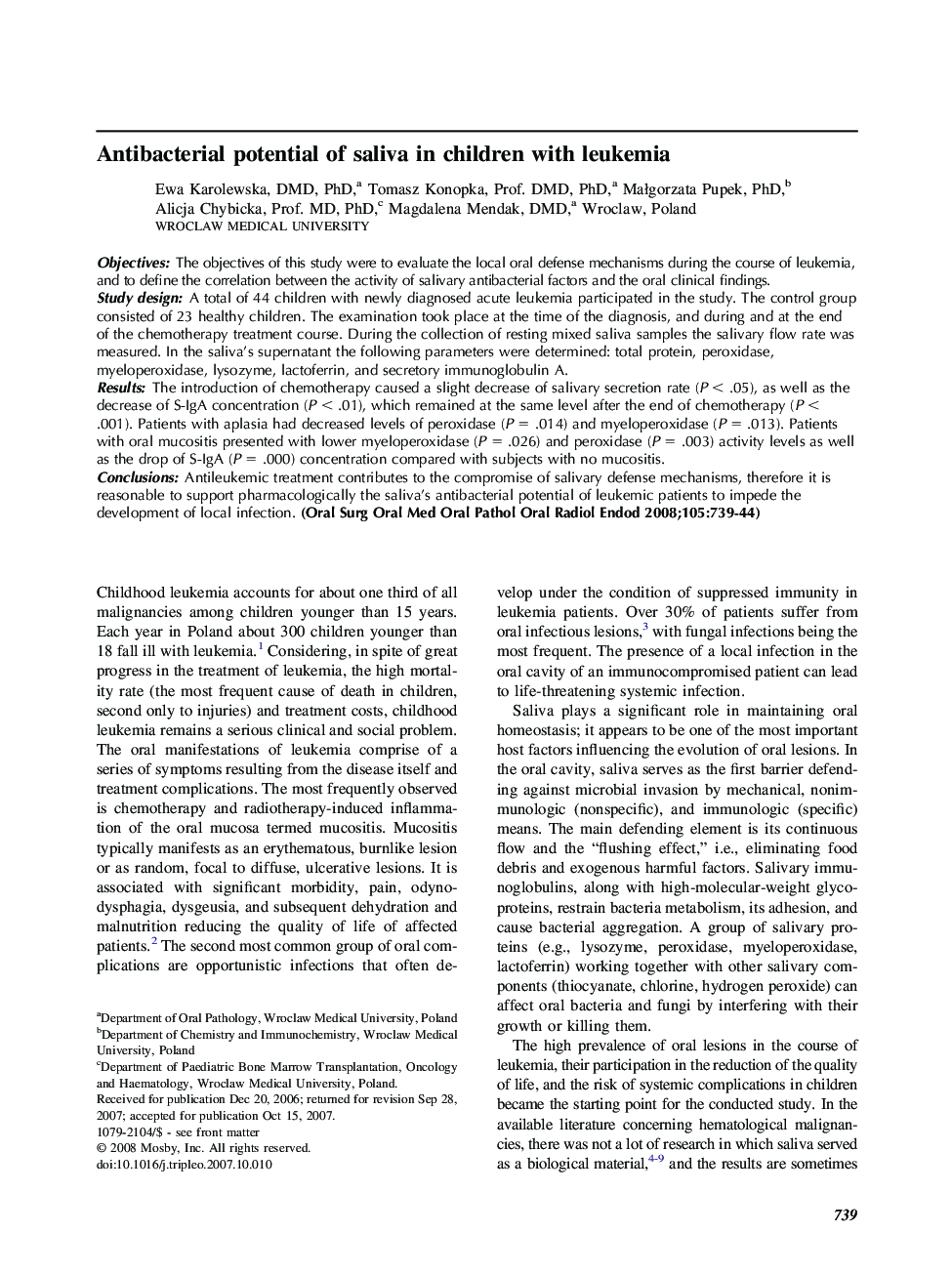| Article ID | Journal | Published Year | Pages | File Type |
|---|---|---|---|---|
| 3168663 | Oral Surgery, Oral Medicine, Oral Pathology, Oral Radiology, and Endodontology | 2008 | 6 Pages |
ObjectivesThe objectives of this study were to evaluate the local oral defense mechanisms during the course of leukemia, and to define the correlation between the activity of salivary antibacterial factors and the oral clinical findings.Study designA total of 44 children with newly diagnosed acute leukemia participated in the study. The control group consisted of 23 healthy children. The examination took place at the time of the diagnosis, and during and at the end of the chemotherapy treatment course. During the collection of resting mixed saliva samples the salivary flow rate was measured. In the saliva's supernatant the following parameters were determined: total protein, peroxidase, myeloperoxidase, lysozyme, lactoferrin, and secretory immunoglobulin A.ResultsThe introduction of chemotherapy caused a slight decrease of salivary secretion rate (P < .05), as well as the decrease of S-IgA concentration (P < .01), which remained at the same level after the end of chemotherapy (P < .001). Patients with aplasia had decreased levels of peroxidase (P = .014) and myeloperoxidase (P = .013). Patients with oral mucositis presented with lower myeloperoxidase (P = .026) and peroxidase (P = .003) activity levels as well as the drop of S-IgA (P = .000) concentration compared with subjects with no mucositis.ConclusionsAntileukemic treatment contributes to the compromise of salivary defense mechanisms, therefore it is reasonable to support pharmacologically the saliva's antibacterial potential of leukemic patients to impede the development of local infection.
